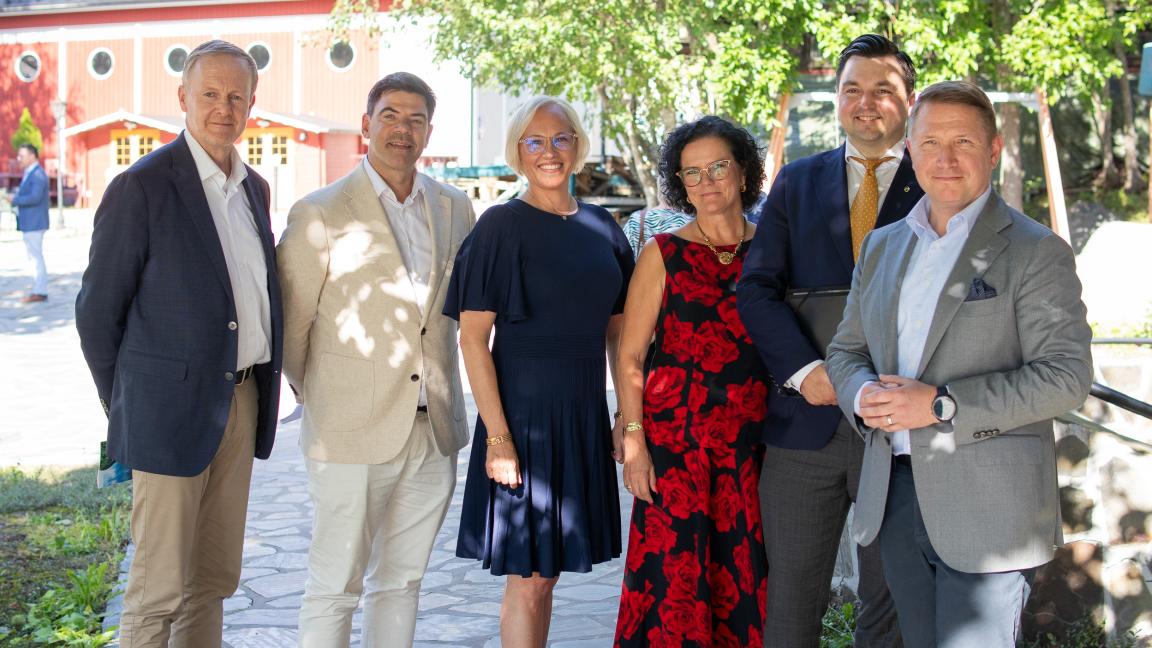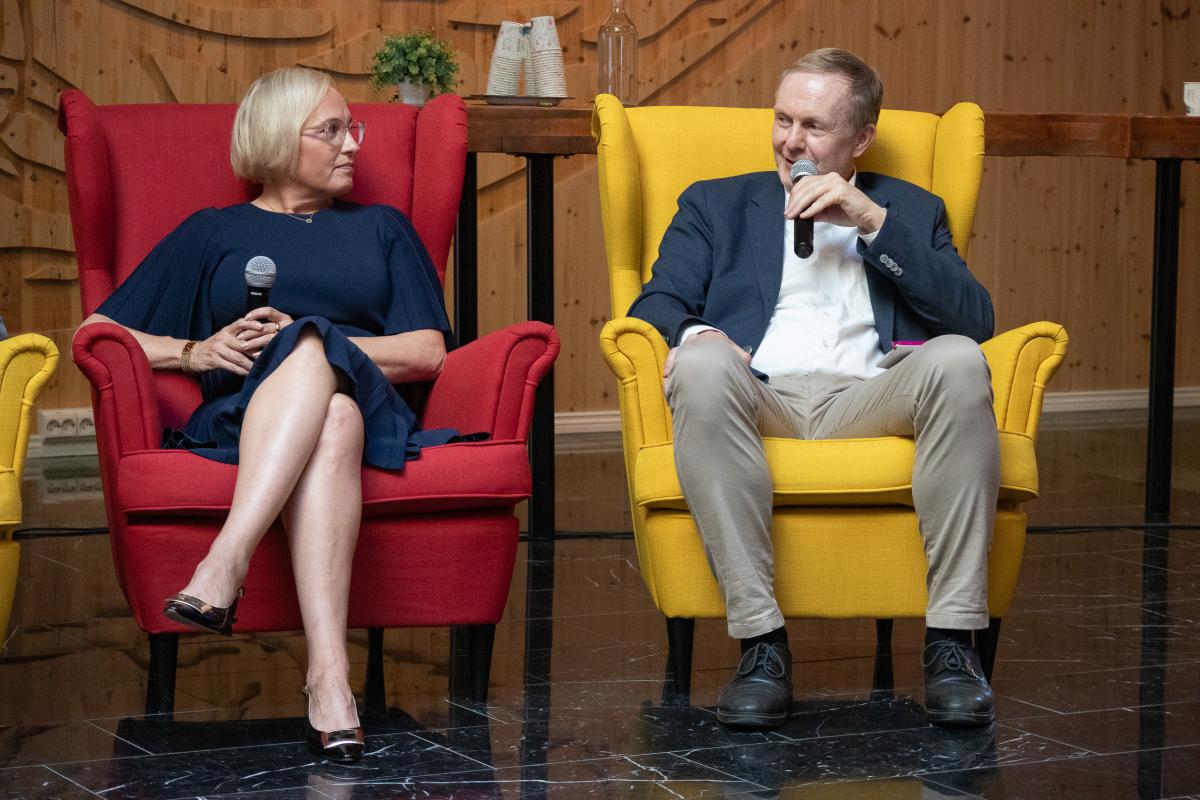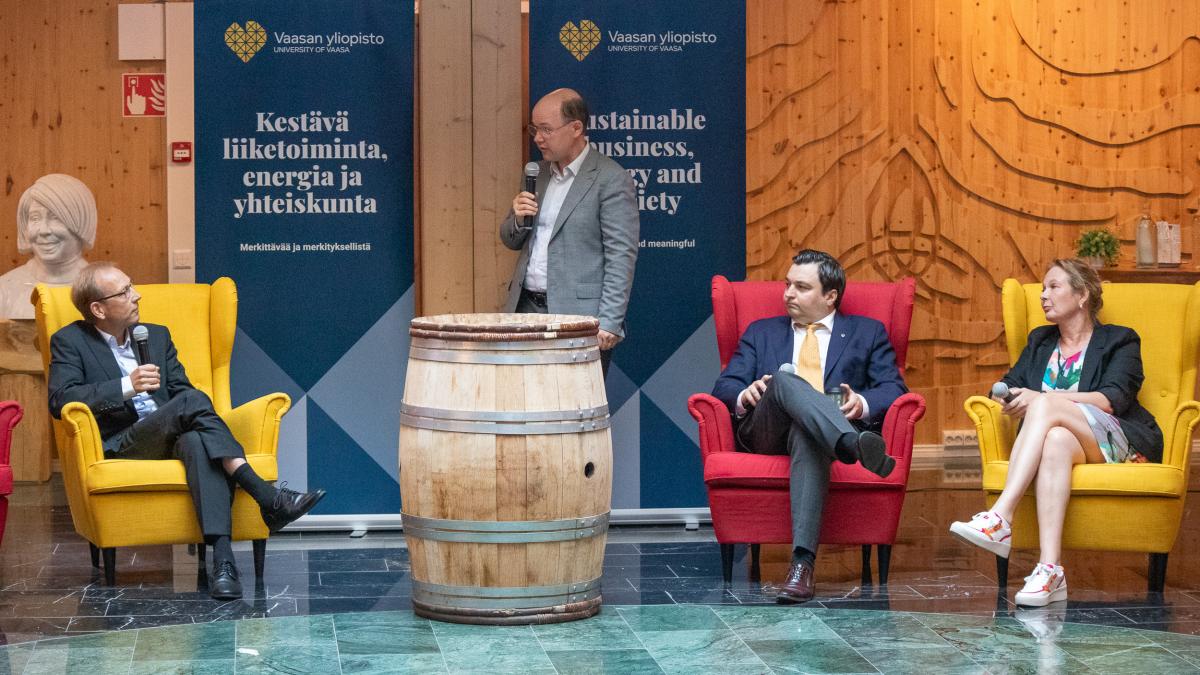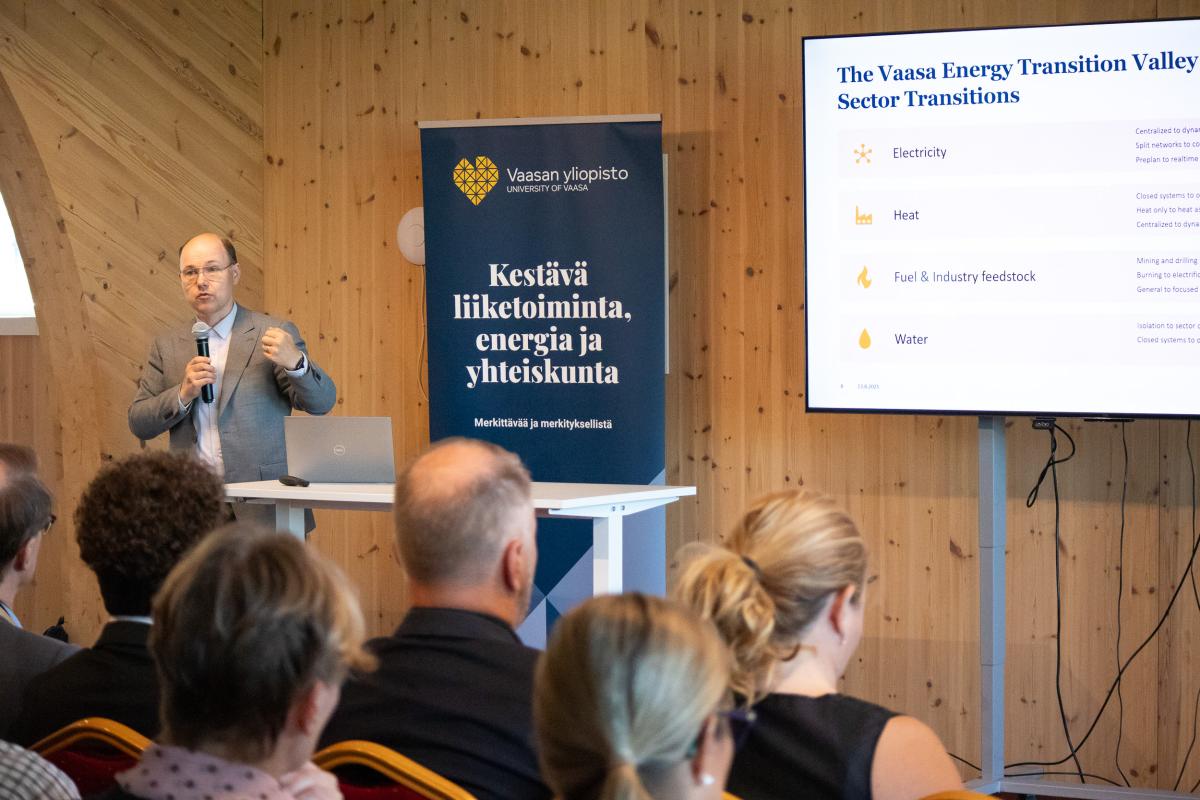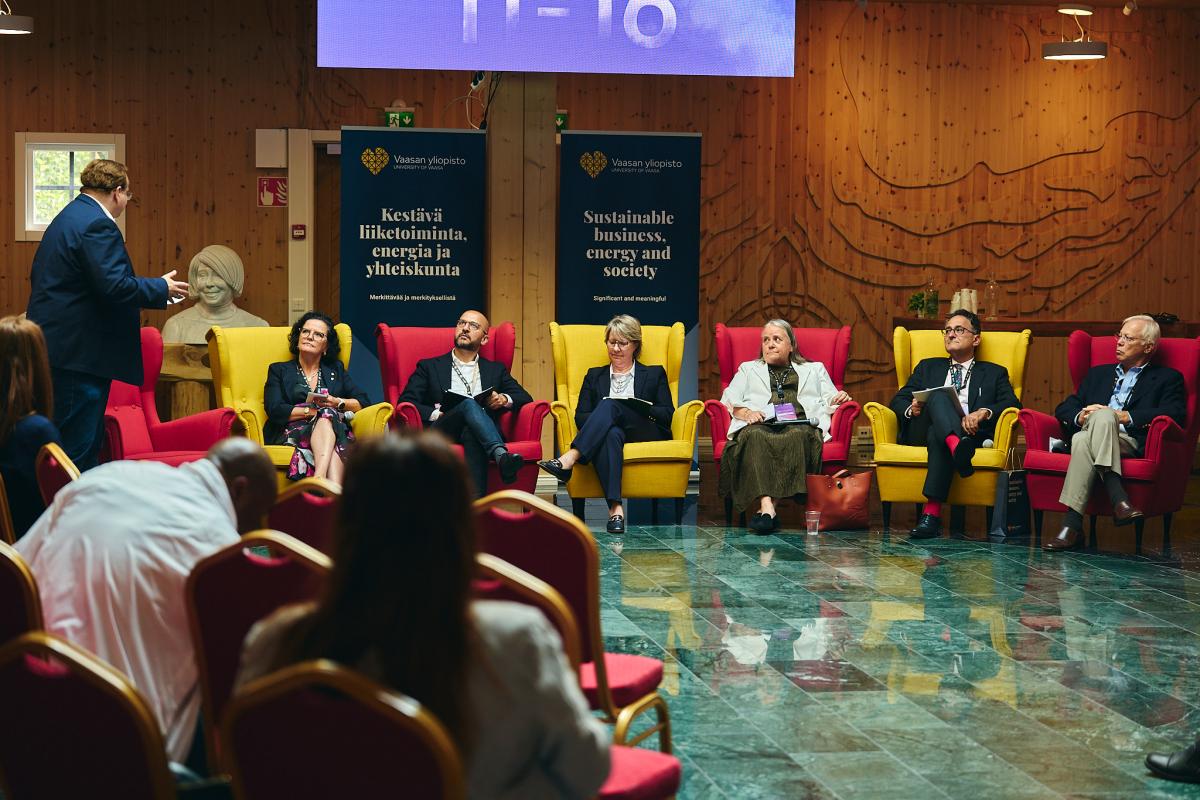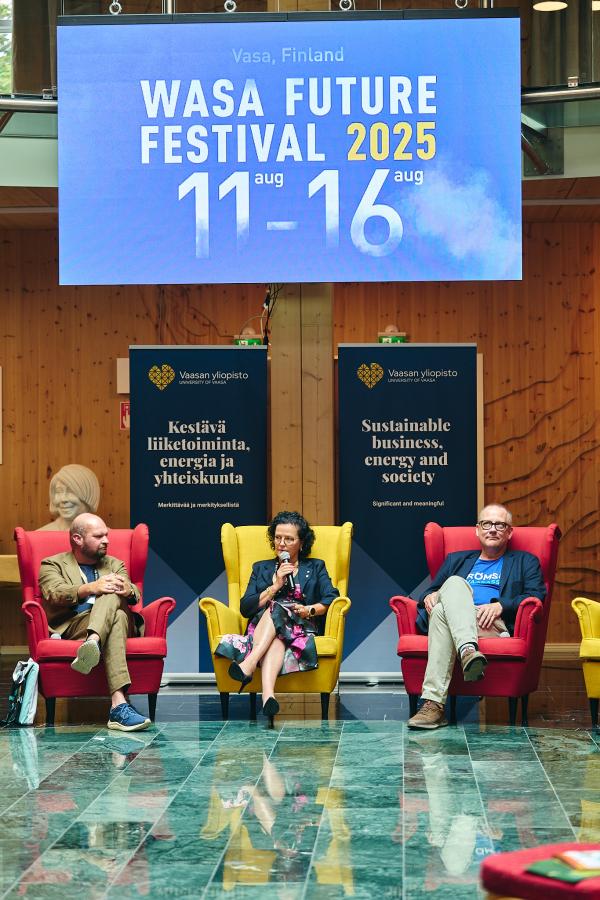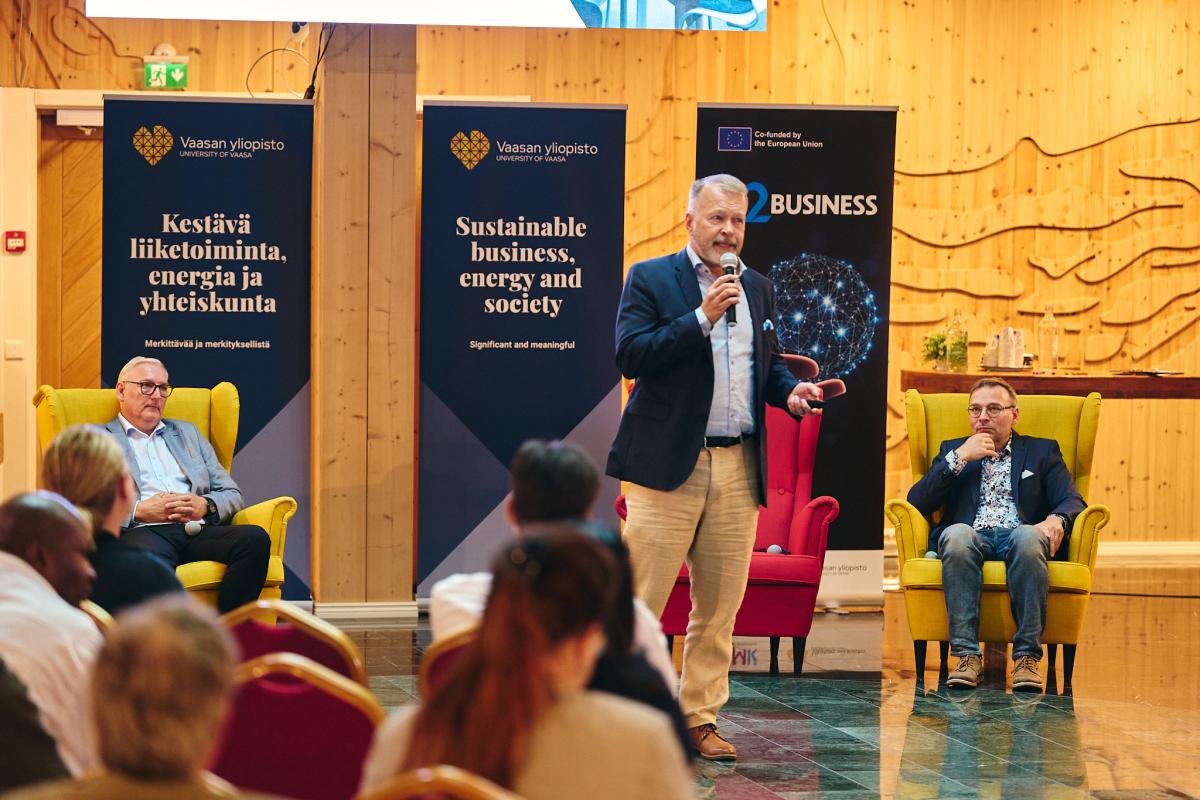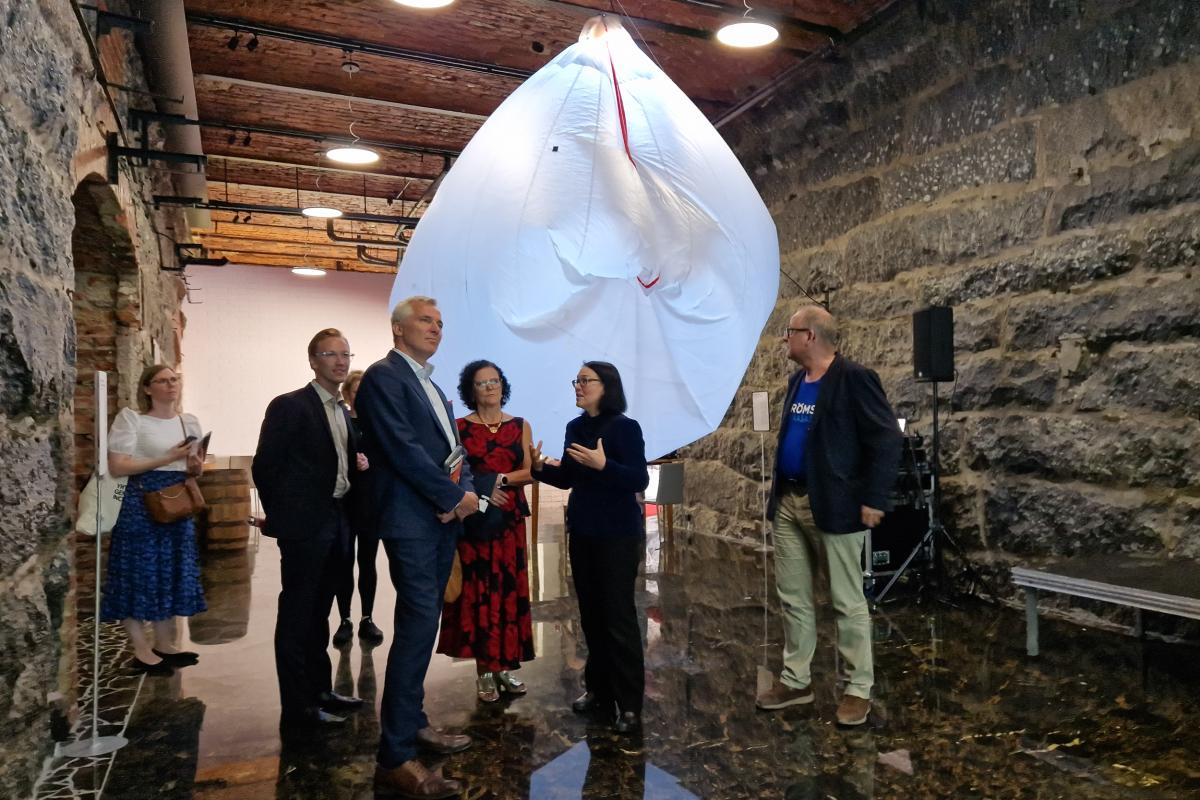Shared discussions, solutions, and new initiatives – University of Vaasa actively present at Wasa Future Festival
How to make Finland a leading investment destination
How could Finland strengthen its position as an international investment destination? This was the focus of a Thursday afternoon panel discussion. Minister Joakim Strand said that investments can be attracted through traditional investment promotion as well as by strengthening research, development and innovation activities and funding solutions.
Jonna Ryhänen, Deputy CEO of Elo, noted that high interest rates and the geopolitical situation are currently delaying investments, but that projects are likely to move forward as interest rates fall. Rector of the University of Vaasa Minna Martikainen stressed that no high-tech country can attract investment without safeguarding its skills base.
Martikainen and panel moderator Casper Herler, Partner at Borenius Attorneys, announced that the University of Vaasa will establish the Investment Hub Finland – a centre bringing together companies, the public sector, investors, financiers, researchers and decision-makers to strengthen Finland’s investment environment.
– This is a more than welcome initiative, Minister Strand commented.
Other panellists included Markku Kivistö, Head of Industry, Cleantech at Invest in Finland, Business Finland and Olli Sipilä, CEO of Gasgrid Finland.
How can Finland become a leader in the energy transition?
On Tuesday, the University Day organised by the University of Vaasa at the festival offered a varied programme on different themes. The morning’s first panel examined how Finland can become a frontrunner in the energy transition and strengthen its investment environment. Minister Joakim Strand emphasised top-level expertise and joint RDI projects between higher education institutions and companies. He also noted that even small public investments – such as branch rail lines – can help steer global companies’ RDI activities to Finland.
Jussi Matilainen from Fingrid highlighted the challenges that new electricity users, such as data centres and hydrogen production, pose to the grid, and the need for simulations, emulations and collaboration with research. Helena Sarén from Business Finland stressed that Finland has expertise and solutions, but that international visibility and commercialisation must be strengthened.
The second panel focused on the Vaasa Energy Transition Valley – a joint initiative of the University of Vaasa and the region’s energy technology cluster to strengthen collaborative research, establish shared research infrastructure, and expand doctoral training. Dean Raine Hermans underlined the importance of identifying the most critical parts of the value chain and of business innovations. Shekhar Kubal from Danfoss emphasised collaboration and test environments, Verne Hartikainen from Epec saw major potential in the electrification of work machines, and Finnish MP Matias Mäkynen called for the use of regional and international platforms, as well as attracting and retaining talent through immigration and language training. On Wednesday, a dedicated development workshop for companies was also held.
Universities play a crucial role in combating climate change globally
The Thought Leaders Round Table: Energy Transition for Climate Action brought together leaders and experts from the higher education sector across different countries to explore how universities can advance the energy transition and climate action through education, research, collaboration, and by re-evaluating their own structures and practices. Speakers highlighted ecosystem collaboration, clear and shared strategic directions, interdisciplinary approaches, and new ways of thinking as key factors in addressing the challenge. Minna Martikainen, Rector of the University of Vaasa, emphasised that more can be done to reduce greenhouse gas emissions, and achieving this requires close cooperation across different fields and stakeholders.
Resilience requires development, trust and dialogue
Resilientti yhteiskunta (Resilient Society) event discussed university–city cooperation and regional preparedness. The panels stressed the systematic development of partnerships, the importance of trust, and the role of local and regional levels in resilience.
In the panel on university–city cooperation, Professor of Practice Sampo Ruoppila stressed that cooperation must benefit both parties; Mayor of Vaasa Tomas Häyry called for more systematic collaboration; and Rector Minna Martikainen highlighted the uniqueness of Vaasa’s cooperation culture. Professor of Strategy Marko Kohtamäki emphasised joint investments and AI solutions in developing the ecosystem.
The preparedness panel, moderated by Research Director Petri Uusikylä, highlighted concerns about the diminishing role of regional preparedness. Professor of Practice Hanna Smith stressed the importance of early signals and rapid response at the local level. Regional State Administrative Agency Director General for Western and Inland Finland, Marko Pukkinen emphasised building local situational awareness, while Wärtsilä’s Head of Security Jan Haglund saw trust as essential to timely information-sharing and effective cooperation. Proposals included strengthening regional situational awareness structures and increasing crisis exercises.
The possibilities of AI need to be recognised and harnessed in business
The AI2Business panel on Tuesday focused on how AI can be harnessed to develop future-proof business models.
– It’s not about 2040, it’s about 2027. In this region, we cannot be 20 years late, said Professor Marko Kohtamäki, highlighting the topicality of the matter.
Marko Komssi, Senior Scientist at VTT, explored the potential of AI leadership, including the intriguing idea of an AI CEO. Pasi Tuominen, CEO of Wapice, talked about AI’s impact on city traffic planning, systems capable of detecting product flaws and control systems like home energy systems. Professor of Practice Pekka Koponen urged the education sector to respond to the great reconfiguration of employment, by embedding skills such as AI literacy across disciplines.
The international Butterfly exhibition, which combines science, art, and technology, has opened its doors
During the festival week, the Butterfly exhibition – organised in collaboration between the University of Vaasa and Deakin University – was inaugurated at Wasa Innovation Center’s Catacombs. The exhibition and its accompanying programmme brought several international artists and experts working at the intersection of science and art to Vaasa.
The exhibition is open daily until 31 August. Read more
You can find recordings of the Wasa Future Festival programmes on the festival’s YouTube channel. Most of the programmes were streamed and recorded.
**
Main photo of the news article: Markku Kivistö, Casper Herler, Riikka Heikinheimo, Minna Martikainen, Joakim Strand and Olli Sipilä took part in Thursday’s investment discussion.
